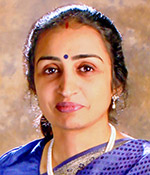
Dr. Sumita Mehta, DNB, MAMS, FICOG.
Do you know girls vaccinated against HPV will still require cervical cancer screening later in their lives?
Cervical cancer is the leading cancer in Indian women and the second most common cancer in women worldwide. The current estimates indicate approximately 132,000 new cases diagnosed and 60,078 deaths annually in India, accounting for nearly one-third of the global cervical cancer deaths. Indian women face a 2.5% cumulative lifetime risk and 1.4% cumulative death risk from cervical cancer. Unlike many other cancers, cervical cancer has a relatively early onset, occurring primarily during reproductive ages with peak incidence occurring at the median age of 38 years.
HPV has been clearly demonstrated as a cause of invasive cervical cancer and at any given time and about 6.6% of women in the general population are estimated to harbor the infection. Based on the association with cervical cancer, HPVs are further grouped into high risk and low risk types. Worldwide, high risk type 16 and 18 account for approximately 70% of cervical cancer. Non oncogenic HPV serotypes 6 & 11 contribute over 90% of benign genital infections such as genital warts. Oncogenic HPV has also been implicated in causing anal, vulvar, vaginal, penile and oropharyngeal cancers. Most women infected with the high-risk HPV self-clear within approximately 2 years of infection; however, in about 15% of HPV infections, the virus persists and induces precancerous lesions or invasive cancer.
There are two complementary approaches for the prevention of cervical cancer: primary prevention through vaccination to prevent human papillomavirus (HPV) infection, this disease’s causal agent, and secondary prevention through screening to detect and treat cervical precancerous lesions before they become invasive.
HPV vaccination induces seroconversion in nearly all vaccinated women and the titer levels are higher than in women with seroconversion as a consequence of natural infection. There are three HPV vaccines which have been approved by FDA; a bivalent vaccine (against HPV 16 & 18) was approved in 2007, a quadrivalent vaccine (against HPV 6,11,16, &18) which was approved in 2006 and a recently introduced nonavalent vaccine (approved in 2014) which protects against HPV 31, 33,45, 52 & 58 in addition to 6,11,16 & 18. These 5 additional types account for 15% of cancers and 25% of CIN2+ (Cervical intraepithelial neoplasia grade 2+) and vaccination with this vaccine provides protection against almost 90% cancers.
Vaccination should be initiated in young girls in the age group of 9 to 14 years although follow up vaccination up to 26 years is recommended. The dosage has been reduced from a 3 dose to a 2-dose schedule. This is because 2 doses have similar immunogenicity and induce comparable antibody titres when compared to 3 doses. Reduction in doses will lead to better compliance and will be more cost effective.
The recommended/standard dosage schedule is:
9-14 years: 2 doses at least 6 months apart; interval between doses should not be greater than 12-15 months
15-26 years: 3 doses; HIV infected or immunocompromised women also need to follow the 3 doses schedule.
Quadrivalent & Nonavalent vaccine-0,2,6 months and Bivalent vaccine-0,1,6 months.
It is recommended that vaccinated women should be screened as per the standard guidelines because HPV 16 & 18 cause only 70% of cervical cancers and a woman could be infected with an HPV strain not present in the vaccine. Currently there is not enough data to suggest revised recommendations for vaccinated women but different guidelines for both the groups may be available in the future. Till then it is important to remember that vaccination and screening are complementary and neither should be omitted.
Key messages about HPV Vaccination:
1. There is a safe, effective vaccine that can protect against cervical cancer.
2. The HPV vaccine works best if received before sexual activity begins.
3. All girls in the age cohort or in the school class/grade/year identified as the target population by the national programme should receive the HPV vaccine.
4. HPV vaccines do not treat or get rid of existing HPV infections.
5. Girls who are already sexually active can also be given the HPV vaccine, though it may be less effective.
Cervical cancer can be prevented by regular screening and HPV vaccination. Since the vaccines do not protect against all HPV types that can cause cervical cancer, girls vaccinated against HPV will still require cervical cancer screening later in their lives.
Dr. Sumita Mehta, DNB, MAMS, FICOG
Specialist & In-Charge, Dept of Obstetrics & Gynaecology, Babu Jagjivan Ram Memorial Hospital, Delhi.
January 17, 2019
References:
Mehta S, Rajaram S, Goel G, Goel N. Awareness about Human Papilloma Virus and its Vaccine Among Medical Students. Indian J Community Med. 2013 Apr;38(2):92-4. doi: 10.4103/0970-0218.112438.






